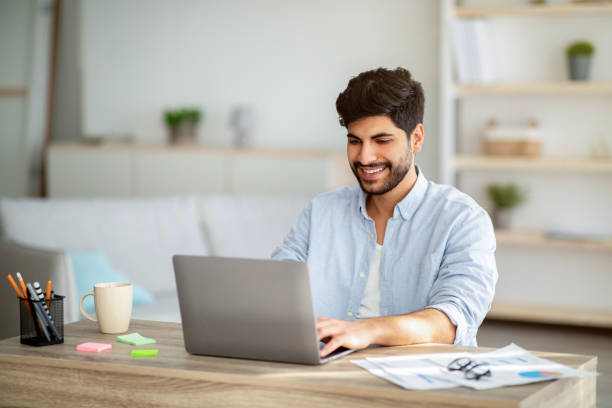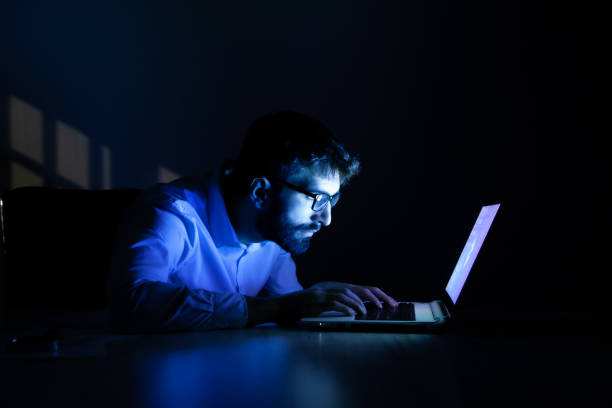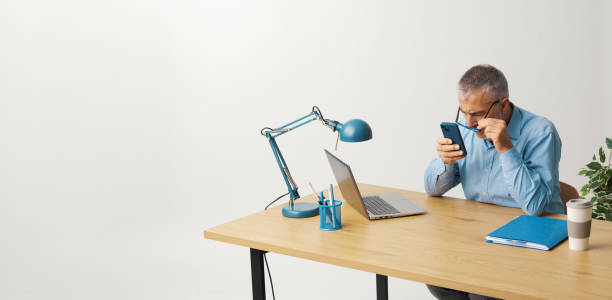So is laptop better than phone for eyes in my own experience, I’ve observed that I can spend an entire day staring at my desktop screen, which is placed at a considerable distance from me, without noticing any significant strain on my eyesight. However, when it comes to using a smartphone, it’s a notable decline in my vision.
Reading text that was perfectly clear just half an hour ago becomes noticeably more challenging and uncomfortable for my eyes. The effects of prolonged smartphone usage on eye health are particularly concerning, with hours of screen time exacerbating these issues. It’s quite remarkable how different the impact can be depending on the device and the duration of use.
Here go in depth and understand more about, is laptop better than phone for eyes? also now advantages
Factors Influencing Eye Strain
Screen Size and Distance: The size of the screen and the distance from which it is viewed play a significant role in determining the strain on the eyes. Laptops generally have larger screens than smartphones, allowing for greater comfort during extended use.
Brightness and Blue Light: The brightness and blue light emitted by screens can contribute to eye fatigue and discomfort. While both laptops and smartphones emit blue light, smartphones tend to be held closer to the eyes, intensifying the exposure.

Text Size and Resolution: The size and resolution of text on the screen affect the ease of reading and the strain on the eyes. Laptops often offer larger text sizes and higher resolutions, reducing the need for squinting and straining.
Ergonomics: The ergonomics of the device and the user’s posture can impact eye strain. Laptops allow for more flexibility in positioning and posture compared to smartphones, which are often held in fixed positions.

Advantages of Using a Laptop
- Screen Size: Laptops typically have larger screens than smartphones, providing a more comfortable viewing experience, especially for tasks that require prolonged focus, such as reading documents or watching videos.
- Adjustable Settings: Laptops offer more customizable settings for brightness, contrast, and font size, allowing users to optimize their viewing experience according to their preferences and needs.
- Physical Keyboard: Laptops come with a physical keyboard, which can be more comfortable and efficient for typing than the virtual keyboards of smartphones. This can reduce eye strain associated with typing on small touchscreens.
- Multitasking: Laptops allow for more efficient multitasking, with the ability to open multiple windows and applications simultaneously. This can reduce the need for constantly switching between tasks, minimizing eye fatigue.
Advantages of Using a Smartphone
- Portability: Smartphones are highly portable and convenient for on-the-go use, allowing users to access information and communicate wherever they are. However, this portability can also lead to prolonged use and increased eye strain.
- Instant Access: Smartphones provide instant access to a wide range of apps and services, making it easy to stay connected and productive on the move. However, this constant connectivity can also contribute to increased screen time and eye fatigue.
- Integration with Other Devices: Smartphones can seamlessly integrate with other devices, such as smartwatches and Bluetooth accessories, providing a cohesive and interconnected digital experience. However, this interconnectedness can also lead to a dependency on screens and increased eye strain.
Laptop vs. Desktop for Video Editing, Making the Right Choice
Tips for Reducing Eye Strain
Regardless of whether you’re using a laptop or a smartphone, there are several strategies you can employ to reduce eye strain and discomfort, I am sure it will be some beneficial for you.

- Take Regular Breaks: Follow the 20-20-20 rule – every 20 minutes, look away from the screen and focus on something 20 feet away for at least 20 seconds.
- Adjust Screen Settings: Customize the brightness, contrast, and text size of your device to reduce eye strain and improve readability.
- Use Blue Light Filters: Consider using blue light filter apps or features to reduce the amount of blue light emitted by your screen, especially during nighttime use.
- Maintain Good Posture: Sit in a comfortable and ergonomic position when using your device, ensuring that your screen is at eye level to minimize neck and eye strain.
- Limit Screen Time: Set boundaries for your screen time and take regular breaks to give your eyes a rest. Engage in activities that don’t involve screens to reduce overall exposure.
Conclusion
Is laptop better than phone for eyes? Both laptops and smartphones have their advantages and disadvantages when it comes to eye health. While laptops offer larger screens and more customizable settings, smartphones are highly portable and provide instant access to information. So is laptop better than phone for eyes, it’s important to note that the size and adjustability of laptop screens may contribute to reduced eye strain compared to smartphones, especially during prolonged use. Ultimately, the key to reducing eye strain lies in practicing good screen habits, taking regular breaks, and maintaining proper ergonomics, regardless of the device being used. By being mindful of how we use our laptops and smartphones and implementing strategies to mitigate eye strain, we can enjoy the benefits of technology without sacrificing our eye health.”
In my opinion laptop is much better than smartphone because of it’s large screen and customizable brightness settings like it give you blue light filter where you can minimize brightness and convert display bright in blue screen. Where smartphone give you bad experience like reading in samall text and continuously focus on screen can strain of eyes.

